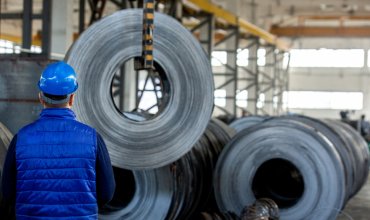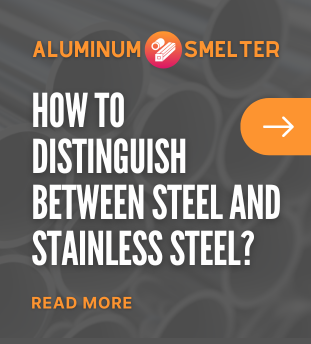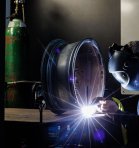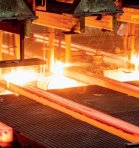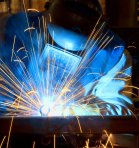Aluminum is one of the most important and widely used metals in the world. Its unique properties make it indispensable in many industries. However, have you ever wondered what aluminum is made of? What are its components, properties and what applications it has in Poland? In this article, we will try to answer these questions, detailing where aluminum comes from, its chemical components and why it is such a valuable material. Get ready for a fascinating journey through the world of this amazing metal.
History of the discovery and production of aluminum
The first references to aluminum date back to ancient times, although at the time it was not recognized as a separate metal. It was referred to as "white silver" by the Chinese. In Europe, technological developments led to its discovery as a separate element in the 19th century. Aluminum was discovered in 1825 by Danish chemist Hans Christian Ørsted. After a few years, in 1827, Friedrich Wöhler, a German chemist, perfected methods for its extraction.
On an industrial scale, aluminum did not begin to be produced until the 1880s, after the development of an electrical method for obtaining aluminum by electrolysis of oxides. Charles Martin Hall of the US and Paul Héroult of France are considered the fathers of industrial aluminum production. The method of electrolysis of molten aluminum oxides, known as the Hall-Héroult process, is still used today.
Chemical composition of aluminum
Aluminum is a chemical element with the symbol Al and an atomic number of 13. It is the third most abundant element in the Earth's crust, accounting for about 8.23% of its mass. Interestingly, pure aluminum as a metal is rarely found in nature. It is found primarily in chemical compounds, such as bauxites, from which it is extracted.
Bauxites are the main source of aluminum. They consist mainly of aluminum oxide hydrates Al2O3-2H2O, aluminum oxide (α-Al2O3) and aluminum hydroxide (Al(OH)3). Bauxite deposits are found in Australia, Brazil, Indonesia and a small percentage in Europe, including Poland, among others.
Aluminum production process
Bauxite mining
The first step in aluminum production is bauxite mining. In Poland, bauxite mining is limited, hence most of the raw materials are imported. Once mined, bauxite is processed through mechanical and chemical processes, leading to aluminum oxide, also known as alumina or alumina.
Alumina production
Alumina is produced using the Bayer process, invented by Karl Josef Bayer in 1888. The process involves dissolving bauxite in a hot sodium hydroxide solution, leading to the separation of the aluminum oxides from the rest of the material. The precipitated aluminum oxide is then dried and baked in ovens, leading to pure Al2O3.
Electrolysis of aluminum oxides
The next step is the electrolysis of aluminum oxides using the Hall-Héroult process. In this process, Al2O3 is dissolved in liquid cryolite (Na3AlF6) and electrolyzed in special electrolyzers. Aluminum accumulates on the cathode and oxygen on the anode, which reacts with the carbon anodes to form CO2.
Physical and chemical properties of aluminum
Physical properties
Aluminum is a lightweight metal with a density of only 2.7 g/cm³. It is three times lighter than steel, making it an ideal material for applications where low weight is crucial. It has a silvery-white color and is very malleable and easy to mold. Its melting point is 660.3°C and its boiling point is 2519°C. It is a good conductor of heat and electricity, which translates into its wide use in the electrical engineering industry.
Chemical properties
Aluminum is a very reactive metal, but under natural conditions it is resistant to corrosion due to the oxide layer that forms on its surface. This is one of its most important characteristics, which allows it to be used in many environmental conditions.
Aluminum reacts with acids and bases to form corresponding compounds. For example, reaction with hydrochloric acid produces aluminum chloride (AlCl3) and hydrogen. In industrial settings, protective oxide coatings can be further enhanced by anodizing processes, which increases the metal's resistance to corrosion.
The use of aluminum in various industries in Poland
Aerospace industry
In Poland, aluminum is widely used in the aerospace industry. Its low weight and high strength make it an ideal material for aircraft structural components. Many Polish companies specialize in producing aluminum components for the world's largest aerospace manufacturers.
Automotive industry
The automotive industry also benefits from the many advantages of aluminum. In Poland, aluminum parts are used to manufacture rims, bodies and other structural components of vehicles. The use of aluminum makes cars lighter, leading to lower fuel consumption and CO2 emissions.
Construction
Aluminum is also widely used in the construction industry. In Poland, it is used for windows, doors, facades and roof structures. Its durability, lightness and ease of processing make it an ideal material for modern architectural projects.
Packaging industry
Aluminum is the number one material in packaging production. In Poland, alu-foils, cans, tubes and other types of packaging are largely produced from aluminum. Its impermeability to light, gases and moisture makes it an ideal material for food and beverage storage.
Electronics and electrical engineering
Aluminum is also an extremely valuable material in the electronics and electrical engineering industries. In Poland, electrical wiring and various electronic components are often manufactured from aluminum due to its excellent electrical conductivity and heat absorption.
Summary
Aluminum plays an incredibly important role in many sectors of the economy and industry, both globally and in Poland. Its unique properties, such as lightness, strength, ductility and corrosion resistance, make it an indispensable material in many applications. From aerospace to construction, aluminum is widely used and contributes to many fields.
Hence, it is important to know what aluminum is made of - its composition, properties and the manufacturing processes that lead to its production. In Poland, despite the fact that we do not have our own bauxite deposits, the processing and use of aluminum stands at a very high level, and our companies successfully compete in the international market.
I hope that after reading this article you have a more complete picture of what aluminum is made of, its properties and its wide range of applications. Whether you are a student, an engineer or simply a curious reader, aluminum certainly fascinates with its versatility and the role it plays in the modern world.





